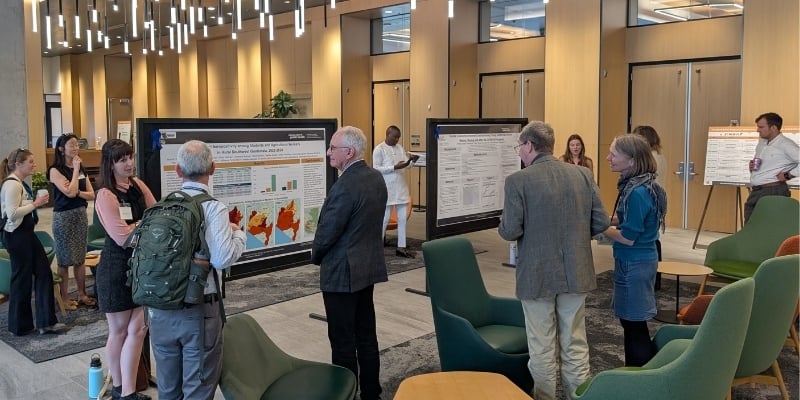Three atmospheric scientists and one epidemiologist from Colorado State University will interpret NASA data for public benefit as part of NASA’s Health and Air Quality Applied Sciences Team. The team’s goal is to translate information from NASA satellites, models and surface observations to help officials make decisions to protect public health.
Jeff Pierce, associate professor in the Department of Atmospheric Science, was chosen as one of 14 principal investigators from universities and government offices across the U.S. who will serve during this four-year term. His co-investigators are atmospheric scientists Bonne Ford and Associate Professor Emily Fischer, and Sheryl Magzamen, epidemiologist and associate professor in the Department of Environmental and Radiological Health Sciences.

“We are tasked to work with various end users to facilitate the use of NASA data in their work and decision-making more easily,” Pierce said.
The CSU collaborators received $500,000 in funding to combine NASA observations into a dataset that can identify the concentrations of various pollutants in the air on any given day, in any location in the contiguous U.S., from 2006 to the present. The dataset they create will inform studies connecting air quality to health outcomes, which could be used to craft regulations.
The project will be based on the team’s previous collaboration on wildfire smoke and human health. They used satellite and surface monitor data to yield daily maps of particulate matter concentration and determine what fraction of the particulate matter was from smoke.
The dataset they created has been used to study health effects from inhaling wildfire smoke, as distinguished from other forms of particulate matter. It also was used in a study by CSU economists linking air pollution and violent crime.
“One of the best aspects of working at CSU is that we have such low walls to collaborations across campus,” Magzamen said. “We all value that our transdisciplinary research allows us to tackle important societal challenges that not only move science forward but fulfill the land-grant mission of our university to translate our science to benefit our communities.”
This project will extend the dataset to include other pollutants: coarse particulate matter, such as dust; NO2, which is produced by vehicles; ammonia and ozone. Epidemiologists then can compare concentrations and combinations of the pollutants to doctor visits and hospitalizations to evaluate health impacts.
“Having multiple species concentrations every day on the same spatial grid makes it easier for epidemiologists to figure out which pollutant is more likely to cause issues, or if there are extra bad interactive effects when multiple pollutants have high concentrations on the same day,” Pierce said.
Several public stakeholders already are interested in the proposed dataset. The Colorado Department of Public Health and Environment wants to use it to examine trends in various pollutants over time. The agency could use the dataset to track changes in air quality from increased traffic on expanded roadways, for example.
“HAQAST has a great history of helping stakeholders and end users with decision-making, and we’re excited to now be part of this team and contribute to making our atmospheric science and health expertise more publicly useful,” Pierce said.
In addition to their proposed research, the CSU investigators will join Tiger Teams – short-term, high-impact collaborations between Health and Air Quality Applied Sciences Team members and public stakeholders to solve an immediate problem using NASA data and products.
“We’re going to figure out what some common needs are across various end users, and what teams we can build within HAQAST to help them use NASA data to meet those needs,” Pierce said.






